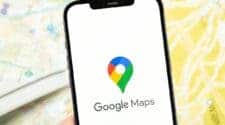Google launched Android Auto in 2015, promising a better car infotainment system to make driving easier. It brought the familiar Android interface to car screens, making it easier to check maps, control music, use Assistant, and check and reply to messages using voice commands. These tasks are much safer with Android Auto than on a phone while driving. However, almost ten years later, Android Auto still has many issues that haven’t been fixed yet.
Android Auto Connection Issues 
Android Auto has unreliable connection issues that are sporadic and inconsistent. For example, the other day, my Honor Magic 6 Pro connected to the car, and wireless Android Auto worked perfectly. However, after stepping out of the car and returning a few minutes later, Android Auto wouldn’t connect. I tried everything to fix it, like resetting the app and updating Android Auto, but the phone still wouldn’t connect.
Furthermore, these connection issues are widely discussed across numerous threads on Reddit and Google Support pages. While some problems may stem from car manufacturers’ hardware and software, many users report similar issues across various devices and cars. This underscores the necessity for Google to conduct a more comprehensive investigation into these issues.
Android Auto High Battery Drainage 
A persistent issue with Google’s in-car system is its tendency to cause excessive battery drain on phones, especially when used wirelessly. Similar to the connectivity issues mentioned earlier, there are numerous threads on Reddit and Google Support discussing this problem. Users commonly report significant battery loss during use, even under optimal conditions such as a one-hour drive.
Factors like car temperature, sunlight exposure, and the quality of the car’s system connection can exacerbate this issue. Google needs to find a solution to ensure a seamless and efficient Android Auto experience for all users.
Android Auto Overheating Issues 
Another issue with the system, which is partly related to battery drain, is overheating. Android phones often become warm when using Android Auto in wireless mode. At times, they can get so hot that they become difficult to handle, leading to slowdowns and lag.
Moreover, attempting to charge the phone while using wireless Android Auto, to counteract the battery drain, can further increase its temperature, especially when using a wireless charger in the car. In contrast, I haven’t observed my iPhone 14 Pro Max becoming excessively warm when connected to my car and using Apple CarPlay.
Lack of Google Maps Dual Screen Mode
Google Maps is the favorite navigation app for many users because it works seamlessly with both Android phone and Android Auto. However, a bothering drawdown is that once navigation starts, you can’t use Google Maps on your phone for anything else — it only displays turn-by-turn directions. You can only regain access to all the features on your phone after exiting navigation. This limitation can be frustrating because Google Maps offers many useful features that you may not be able to access during navigation.
While Google has occasionally allowed Google Maps to work simultaneously on both the phone and Android Auto, it often appears unintentional. This feature hasn’t been observed on any of the Android phones used, including the Honor Magic 6 Pro shown in the image above. There is hope that Google will resolve this issue and reintroduce this capability, especially since it’s already available with CarPlay and iOS.
A call for the Return of Android Auto for Phone Screens 
Not everyone owns a car with an Android Auto-compatible infotainment system. To accommodate this, when Google initially launched Android Auto, it provided Android Auto for Phone Screens as an app. This allowed users to enjoy a driver-friendly interface with easily accessible large screen buttons on their phone’s display. However, after a significant update to Android Auto in 2019, this feature was sidelined. With the release of Android 12, Google officially discontinued the app.
Given that American drivers now keep their cars for an average of over 12 years, it’s crucial for Google to reintroduce Android Auto for Phone Screens. Many drivers still use cars without built-in touch screens, and bringing back this app would enhance safety and convenience during driving.
While Google has areas to improve in this department, it’s not without its strengths. In fact, with its robust voice assistant, support for third-party apps, notification system, and integration with Google Maps, many consider it superior to Apple’s CarPlay. However, there’s consensus that Google still has plenty of room for enhancements and refinements.
Conclusion
In conclusion, while Android Auto offers a compelling in-car experience with its intuitive interface, voice assistant integration, and support for various apps, it’s plagued by unresolved issues. From unreliable connections and excessive battery drain to overheating phones and limited navigation functionality, these shortcomings significantly hinder user experience. Additionally, the discontinuation of Android Auto for Phone Screens leaves drivers without compatible car infotainment systems out in the cold. To maintain its edge over competitors like CarPlay, Google must address these issues and consider reintroducing features like the phone screen app. By prioritizing user needs and addressing these pain points, Google can transform Android Auto into the truly seamless and safe driving companion it has the potential to be.
Looking towards the future, a more comprehensive approach from Google is necessary. This includes conducting thorough investigations into connection issues, optimizing the app for battery efficiency and thermal management, and prioritizing features like dual-screen functionality for Google Maps. Furthermore, reintroducing the in-car software for Phone Screens would cater to a broader range of users and enhance overall accessibility. By focusing on these improvements, Google can ensure that the software remains a leader in the in-car infotainment market, offering a safe, reliable, and feature-rich experience for drivers of all car models.
Source / Via: AndroidPolice





